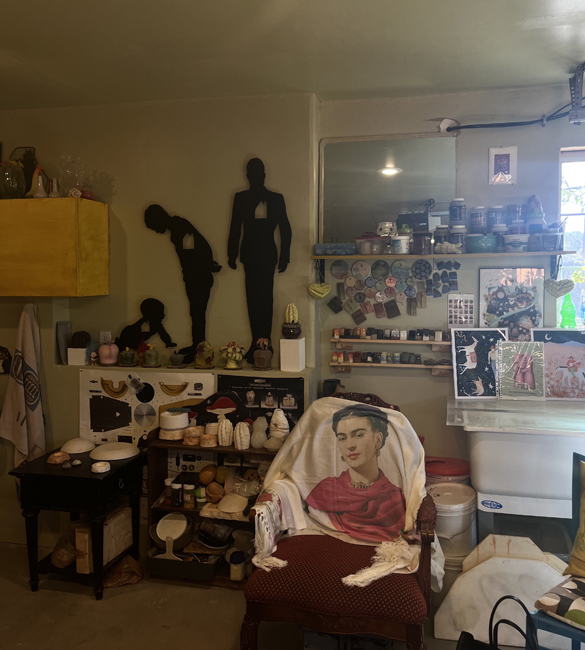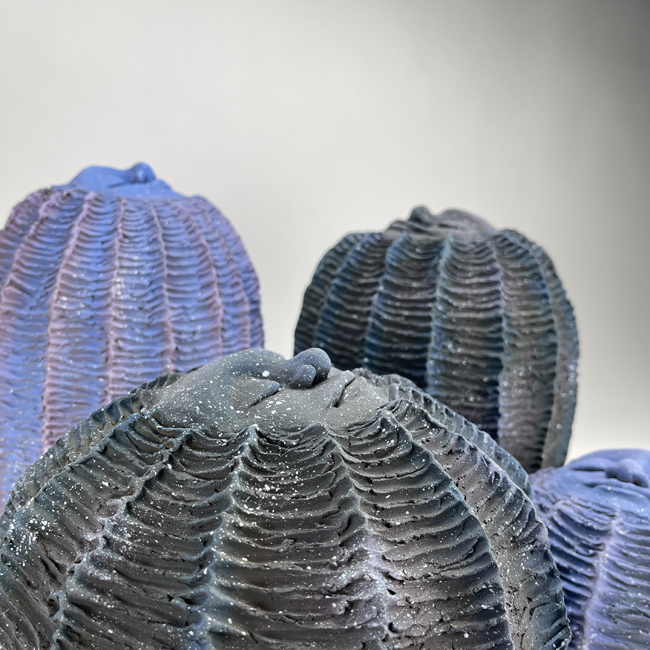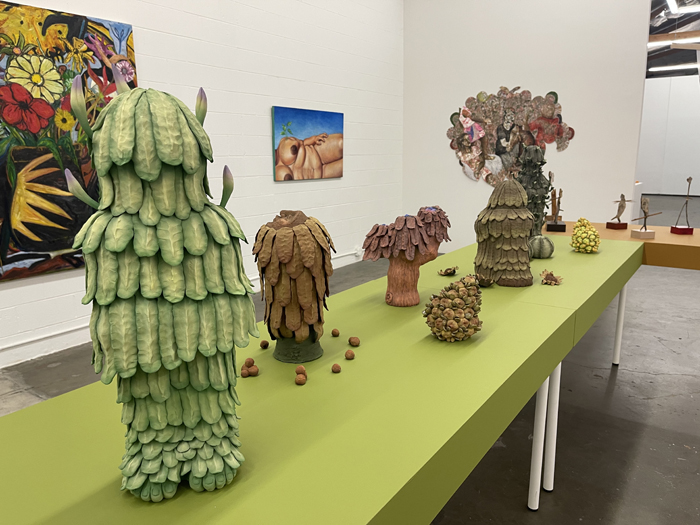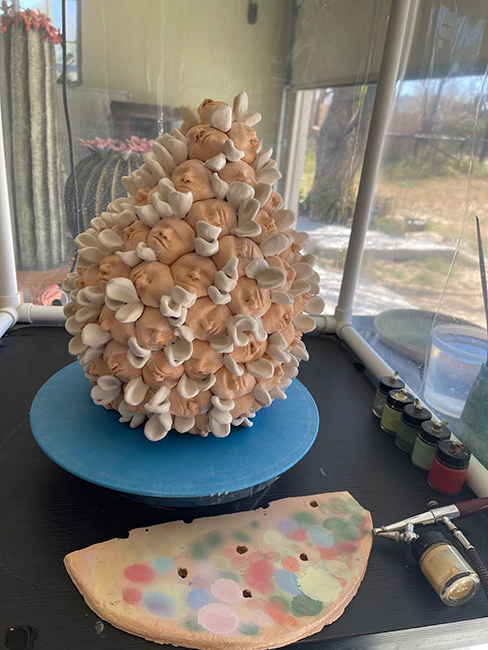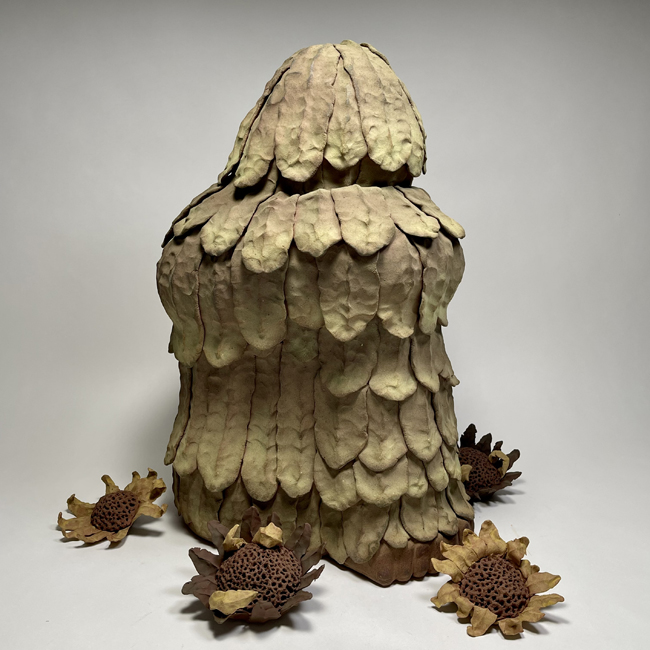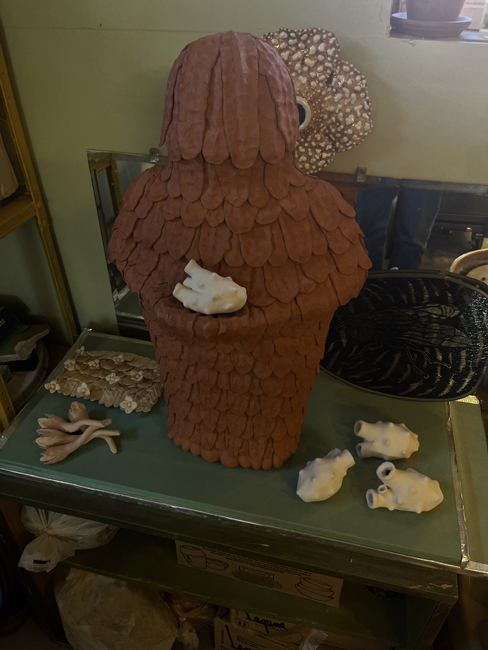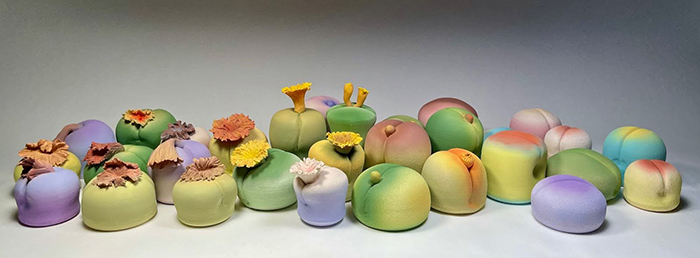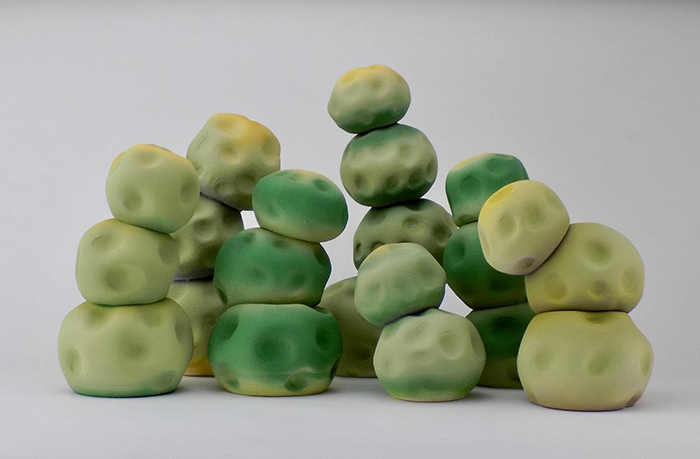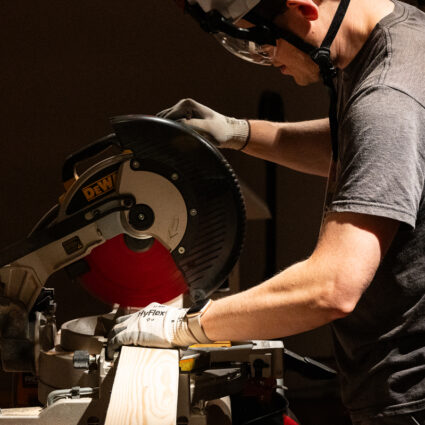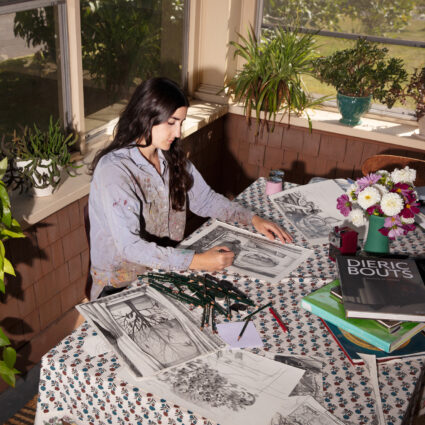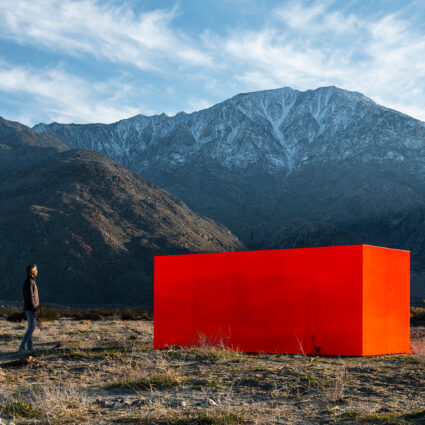Ceramicist John Flores infuses natural forms with humanistic qualities to create surreal sculptures that celebrate transition and change.

As I settle into a maroon chair draped in a blanket with Frida Kahlo’s face on it, ceramicist and sculptor John Flores offers me green tea. I accept and look around. Every windowsill in the studio is lined with glasses, each housing clippings of different plants, young and bright with chlorophyll.
Flores pours steaming water into two rainbow mugs and hands me one.
“I’ve always felt a connection with nature, even more so than with religion or anything else,” he tells me. “None of that really worked for me, but nature did.”
If nature is Flores’s religion, ceramics is his method of worship. He began working with clay in high school, and after mastering the wheel, he wanted to explore sculpture. The artist graduated from California State University, Fullerton, where he was mentored by Nobuhito Nishigawara, with his BFA in 2019. Now, his home studio space in Yucca Valley, California is filled with objects—various molds, casts of Troll dolls, and sculptures with terracotta skin exposed.
It takes me a minute to realize the mug I’m holding is one of Flores’s creations, too, but then I see it: the organic curves of the piece, the airbrushed ombre finish Flores uses on his sculptures, most of which resemble some type of succulent.

“Cacti are resilient,” Flores says. “There’s something beautiful about the fact that they grow in crazy environments where it’s super hot and you wouldn’t think anything could survive, but there they are, thriving,” he muses.
The move from Los Angeles to Yucca Valley marked Flores’s blossoming. Today, his work draws forms and feelings from the surrounding desert landscape, which he merges with personal and Mesoamerican cultural symbolism. Cacti morph into obscure but friendly figures; bright flowers bloom and die, signifying personal awakenings, transitions, resilience, and renewal. Flores’s sculptures are an amalgamation of place and personhood, a type of vibrant self-portraiture in conversation with the flora and phenomena of the land and cultures around him.
“Even when I lived in Los Angeles, I had a ton of succulents and cacti—my whole backyard was full of them,” Flores says. “There’s something attractive about them. I think a lot of it has to do with me being gay; I’ve always felt like an outsider, a misfit, and those plants embody it. Some people see them as a nuisance, with spikes and all that, or weird and ugly. I’ve always been drawn to that and to those types of people.”
The eclectic culture and otherworldly landscape of Joshua Tree suit Flores. “I moved out here in 2022 because I fell in love with Joshua Tree National Park,” Flores explains. He and his partner had debated between the desert and the mountains before they settled on Yucca Valley. “At the end of the day, I wanted the openness. There’s something therapeutic about it.”
Flores’s momentum has certainly grown since he relocated to the desert. Some of his recent work has been included in Mythopoetica: Symbols and Stories at the Palm Springs Art Museum. “There’s a vibrancy to my work now, because I’m in a happy spot, a happy place, and my career is evolving,” Flores says.
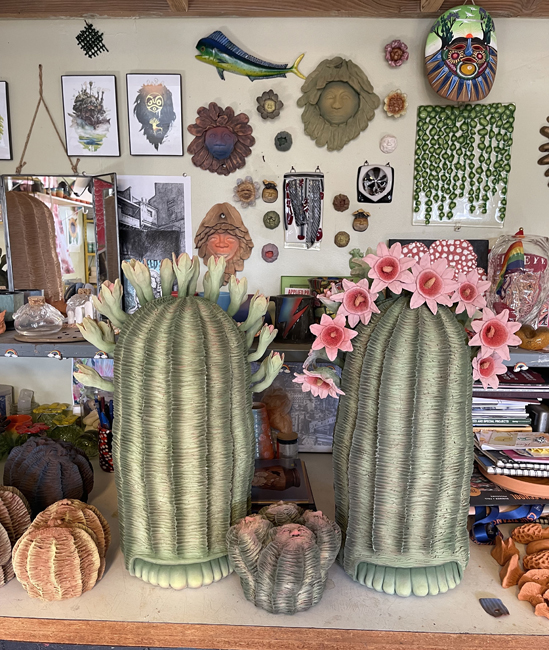
Showing work in the PSAM show has been a boon, and more Southern California collectors have started calling. “A lot of people say these lands have a healing energy. I’m creating work that’s all mine and really feeling accepted, meeting friends, and making community here.” He laughs. “Everybody out here is really weird and eccentric, and I love it.”
The art community Flores has found in Southern California has also prompted him to look to the past and explore his Mexican roots. His grandfather was from Texas, one of nineteen family members living on a farm.
“But my parents were very disconnected from the [Mexican] culture,” he says. “It was an assimilation type of thing. They were trying to conform to an American identity, but they didn’t even teach me Spanish,” Flores says.
Participating in the Latinx show Sueñx at the Mistake Room in downtown L.A. prompted him to ask questions he hadn’t considered head-on in the past. “What is my culture? What’s my identity?,” Flores recalls. He turned to research on the religious and ceremonial aspects of Mesoamerican culture for answers.
The ancestral influences are apparent in Flores’s latest works. “I call this one The Offering”—he gestures to a vaguely humanoid sculpture by one of the windows. It’s an epiphyllum form, Flores tells me, which is based on a cactus of the same name that grows in Mexico and South America. It’s a form he’s used before, but he’s returning to it with more intent. “It’s a self-identity form, but I’m still hidden. You don’t see a face, you can only kind of make out a body.”
This particular body holds a heart in its hands. “I read about how our ancestors came from the cactus petals, the fruits on the top of the cacti,” Flores explains. He wants the final piece to resemble an altar. “I’ll adorn it with the nopales, which nods to the Aztec practice of live offerings of hearts. It’s kind of gruesome,” he admits, “but I want to make it my own by softening it. The work is moving from divinity in nature to my own interpretation of culture and ancestry.”
Softness, expressiveness, even playfulness—these characteristics define all of Flores’s sculptures. They are, after all, self-portraits.
